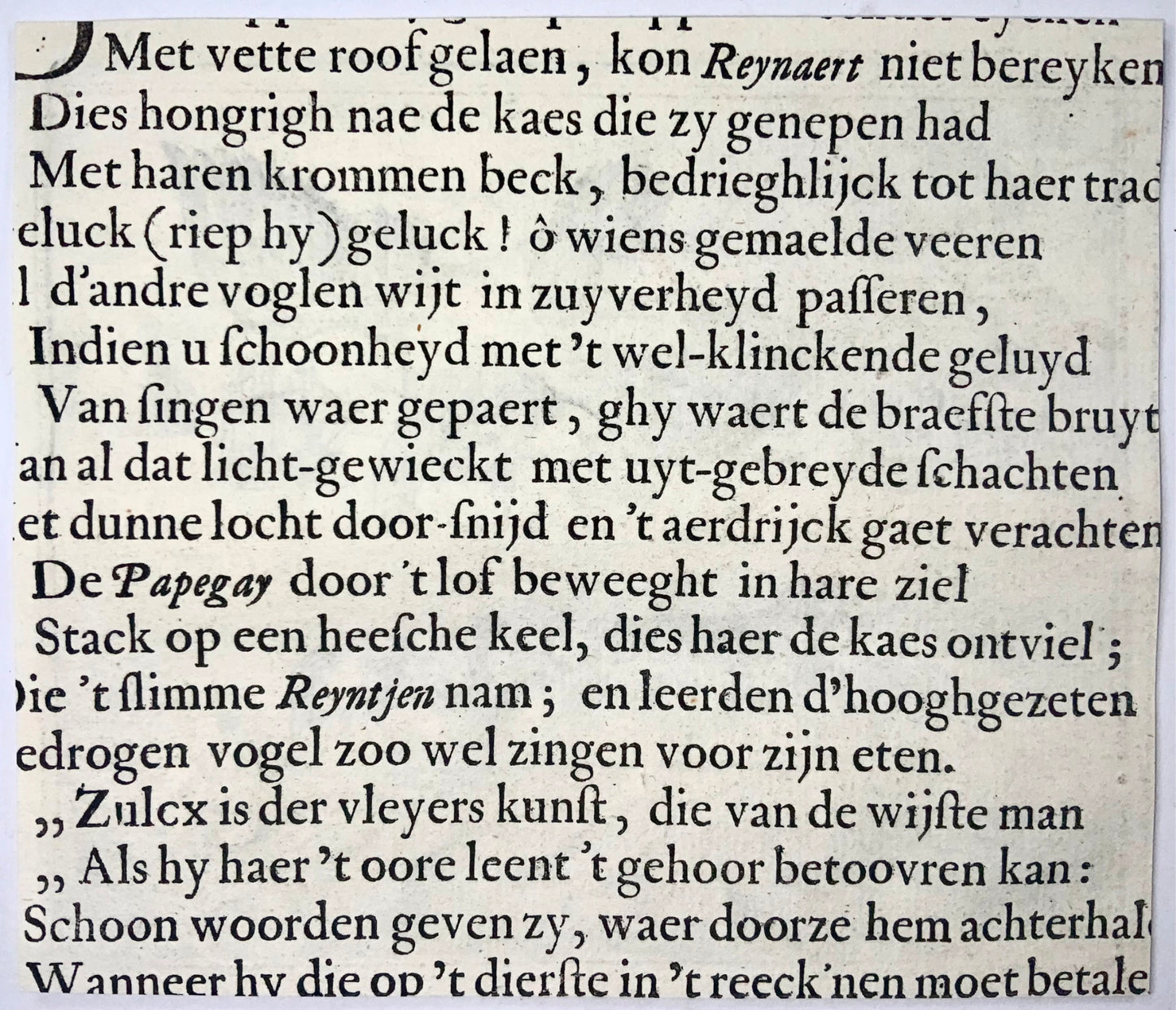1617 Gheeraerts, Master Engraving, Aesop: the Frog, Rate and Eagle, Fable
1617 Gheeraerts, Master Engraving, Aesop: the Frog, Rate and Eagle, Fable
Impossible de charger la disponibilité du service de retrait
A Rat in an evil day made acquaintance with a Frog, and they set off on their travels together. The frog on pretense of great affection, and of keeping his companion out of harm's way, tied the Rat's foot to his own hind-leg, and thus they proceeded for some distance by land. Presently they came to some water, and the Frog, bidding the Rat have good courage, began to swim across. They had scarcely, however, arrived midway, when the Frog took a sudden plunge to the bottom, dragging the unfortunate Rat after him. But the struggling and floundering of the Rat made so great a commotion in the water that it attracted the attention of a Eagle, who, pouncing down and bearing off the Rat, carried away the Frog at the same time in his train.
Moral:
Inconsiderate and ill-matched alliances generally end in ruin; and the man who compasses the destruction of his neighbor is often caught in his own snare.
Marcus Gheeraerts
Issued in the series:
Vorstelijcke warande der dieren; waer in de Zeden-rijcke Philosophie, Poëtisch, Morael, en Historiael, vermakelijck en treffelijck wort voorghestelt
1617
Plate: 9.5 x 11.4 cm. Trimmed to outside plate mark. Text to verso.
Marcus Gheeraerts the Elder (c. 1520 – c. 1590) was a Flemish printmaker and painter associated with the English court of the mid-16th century and mainly remembered as the illustrator of the 1567 edition of Aesop's Fables.
Gheeraerts is most noteworthy as a printmaker. He was a keen innovator and experimented with etching at a time when woodcut and engraving were dominant techniques. Gheeraerts' style resembles that of Pieter Bruegel the Elder. In his own day, Gheeraerts was particularly famous as a draughtsman of birds and animals, and since the Protestant Reformation had halted the church art market, he showcased his talent in the fable book De warachtighe fabulen der dieren from 1567. He etched the title page and 107 fable illustrations and had his friend, Edewaerd de Dene, write the book's fables in Flemish verse.
This edition 1617. Dutch text to verso.
CATALOGUE RAISONNÉ
de Vries, De Nederlandsche Emblemata, 73; Landwehr, Dutch Emblem Books, 252a; Hollstein, Dutch and Flemish, VII, p. 100, nos. 1-108
Partager



Abonnez-vous à nos emails
Abonnez-vous à notre liste de diffusion pour recevoir des informations privilégiées, des lancements de produits et bien plus encore.


